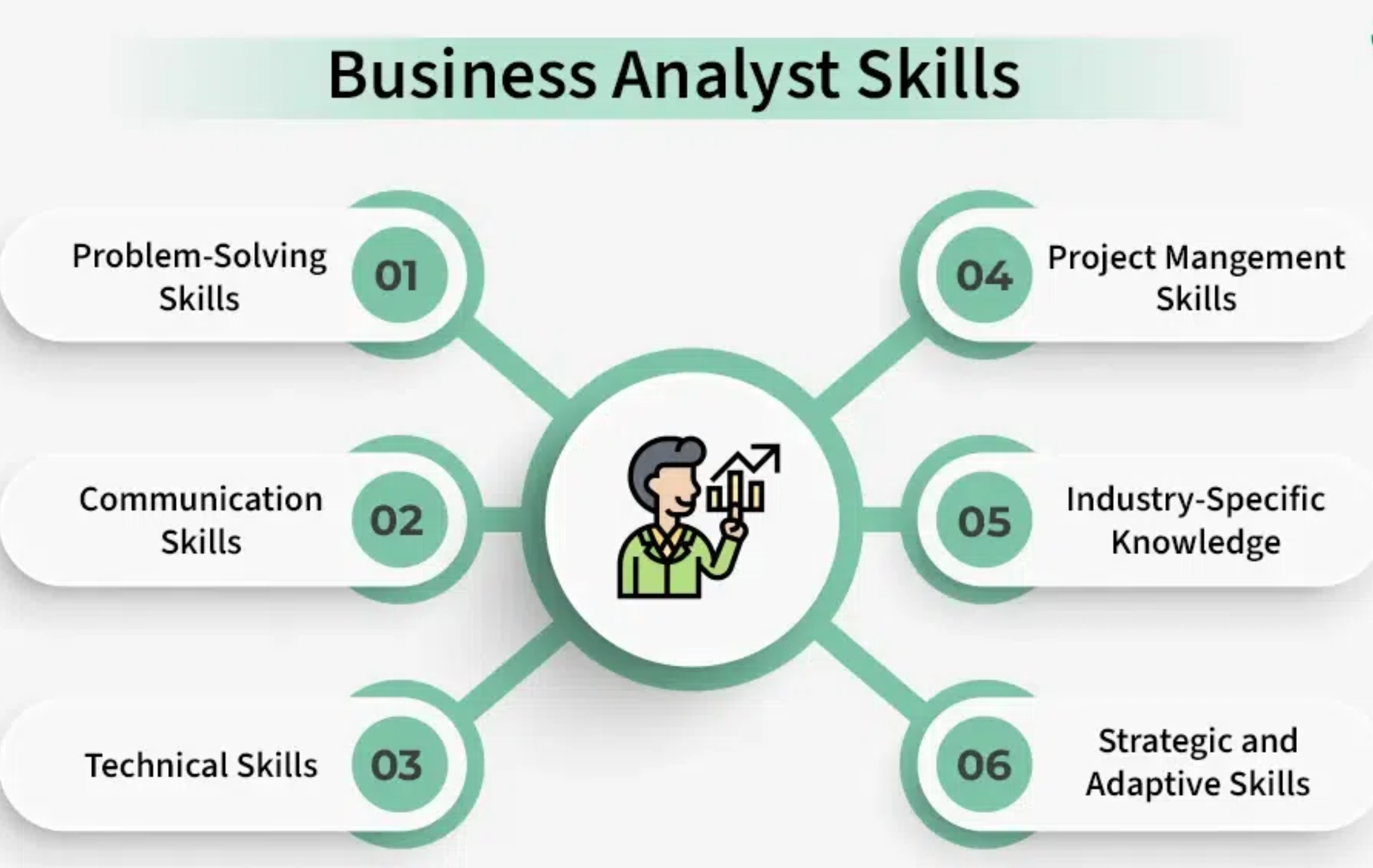What is the role of a Business Analyst in a project?
A Business Analyst acts as a bridge between stakeholders and the development team, ensuring the project requirements are clearly understood and implemented to meet business goals.
What are the key skills required to be a successful Business Analyst?
Key skills include communication, analytical thinking, problem-solving, stakeholder management, documentation, and knowledge of tools like JIRA, Visio, or SQL.
What is the difference between a Business Analyst and a Project Manager?
A Business Analyst focuses on defining requirements and ensuring solutions meet business needs, while a Project Manager is responsible for planning, executing, and managing the overall project timeline and resources.
What are the primary responsibilities of a Business Analyst?
Responsibilities include requirement gathering, stakeholder management, creating documentation, analysing data, and ensuring solutions align with business objectives.
What tools do Business Analysts commonly use?
Common tools include JIRA (for tracking tasks), Microsoft Visio (for process mapping), Lucidchart (for diagrams), SQL (for data analysis), and Microsoft Excel (for reports).
What is a Use Case, and how is it used in requirement analysis?
A Use Case defines the interaction between a user and a system to achieve a specific goal. It helps identify functional requirements and scenarios.
What is a SWOT analysis, and how is it applied in business analysis?
SWOT analysis evaluates a business’s Strengths, Weaknesses, Opportunities, and Threats to identify areas of improvement and growth opportunities.
Explain the concept of a “Requirement Traceability Matrix”?
A Requirement Traceability Matrix (RTM) is a document that tracks and maps requirements to ensure they are addressed throughout the project lifecycle.
What are the common types of requirement documents created by Business Analysts?
Common documents include BRD (Business Requirement Document), FRD (Functional Requirement Document), SRS (Software Requirement Specification), and RTM.
What is the difference between functional and non-functional requirements?
The difference between functional and non-functional requirements is crucial for gathering and documenting system needs effectively.
| Criteria | Functional Requirements | Non-Functional Requirements |
| Definition | Specifies what the system must do. | Specifies how the system should perform. |
| Focus | Business rules, processes, and system capabilities. | Quality attributes like security, performance, and usability. |
| Stakeholders | Business users, product owners, development teams. | IT teams, architects, compliance teams, UX designers. |
| Examples | The system must generate monthly sales reports. Users should be able to reset their password via email. | The system must process transactions in under 2 seconds. The system must be 99.9% available. |
| BA’s Role | Gather and document business needs. Ensure alignment with business goals. | Define measurable system quality criteria. Ensure compliance with industry standards. |
| Documentation | Use user stories, process flows, and use cases to capture. | Use SLAs (Service Level Agreements), performance benchmarks to define. |
What is a BRD (Business Requirement Document), and why is it important?
A BRD outlines the business objectives, goals, and high-level requirements of a project. It ensures all stakeholders have a clear understanding of the project scope.
What is the Agile methodology, and how does a Business Analyst contribute to it?
Agile is an iterative approach to project management and software development. A Business Analyst collaborates with stakeholders, defines user stories, and ensures requirements align with the sprint goals.
How does a Business Analyst manage stakeholders in a project?
Through regular communication, meetings, requirement elicitation, and conflict resolution while keeping stakeholders informed and engaged.
What are the steps involved in the requirements gathering process?
Steps include:
Identifying stakeholdersEliciting requirements through interviews, surveys, and workshopsDocumenting requirementsValidating and prioritizing requirements
What is the difference between Waterfall and Agile methodologies?
Waterfall is a linear approach with fixed phases like planning, development, and testing.
Agile is iterative and flexible, with frequent feedback and collaboration.
How does a Business Analyst handle conflicting requirements from stakeholders?
By analyzing the business impact of each requirement, facilitating discussions among stakeholders, and prioritizing based on business value.
What is Gap Analysis, and why is it important in business analysis?
Gap Analysis identifies the gap between the current state and desired state of a process or system. It helps define the steps needed to bridge the gap.
How do you prioritize requirements during a project?
Using techniques like Moscow (Must have, Should have, Could have, Won’t have), cost-benefit analysis, or based on stakeholder urgency and business value.
How does a Business Analyst ensure effective communication with stakeholders?
By using clear and concise documentation, conducting regular meetings, using visual tools like diagrams, and maintaining open channels of feedback.
What techniques can be used to elicit requirements effectively?
Techniques include interviews, brainstorming sessions, workshops, focus groups, surveys, observation, and prototyping.

